Abstract
Cholelithiasis among male and female patients at the Royal Melbourne Hospital was studied, and the incidence of the disease in relation to various clinical and dietary factors is discussed. The patients are distinguished by sex and country of origin, a distinction being made between patients born in Australia and those born in southern Europe and now living in Australia. Appropriate control groups were also studied.
It was shown that the incidence of cholelithiasis is higher in women than in men (3·0% as opposed to 0·7% in the Melbourne Hospital group), and higher among patients born in southern Europe than in Australia. A correlation was also established between marriage and the disease, and, in women, between having had children and the disease.
The dietary investigations showed that in Australia those patients with cholelithiasis were fatter than the control patients. Equally well there seemed to be a strong family tendency to develop gallstones. No association was found between cholelithiasis and blood grouping.
In the comparison of the southern European group and the Australian-born group it was shown that the former group had a higher incidence of the disease (9·3% as opposed to 2·3%), and that the overall incidence of cholelithiasis increased with age in men and was constant in women. However, when taken separately, the incidence in Australian female patients did increase with age, the higher proportion of women from southern Europe with the disease where the incidence was, in fact, evenly distributed in all age groups, accounting for this apparent constancy. It was also shown that a woman born in southern Europe increased the risk to herself of developing gallstones within two to five years of moving to Australia, and the contributory factors are discussed.
Full text
PDF
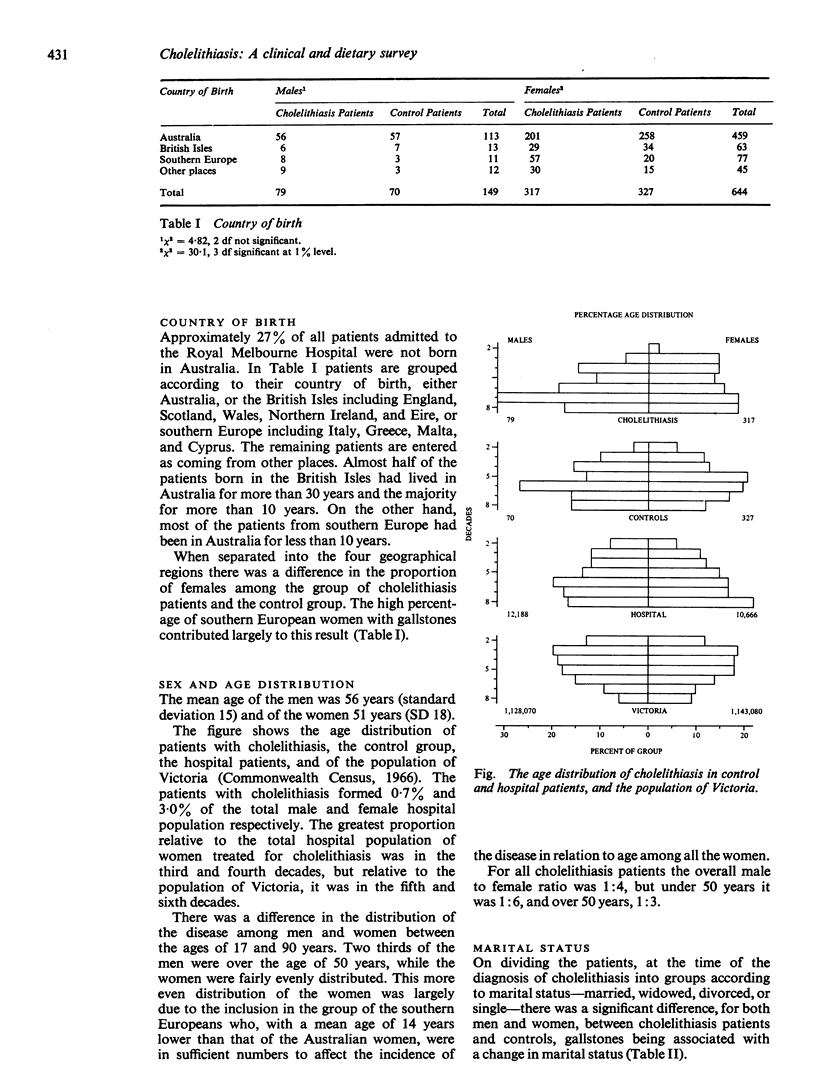
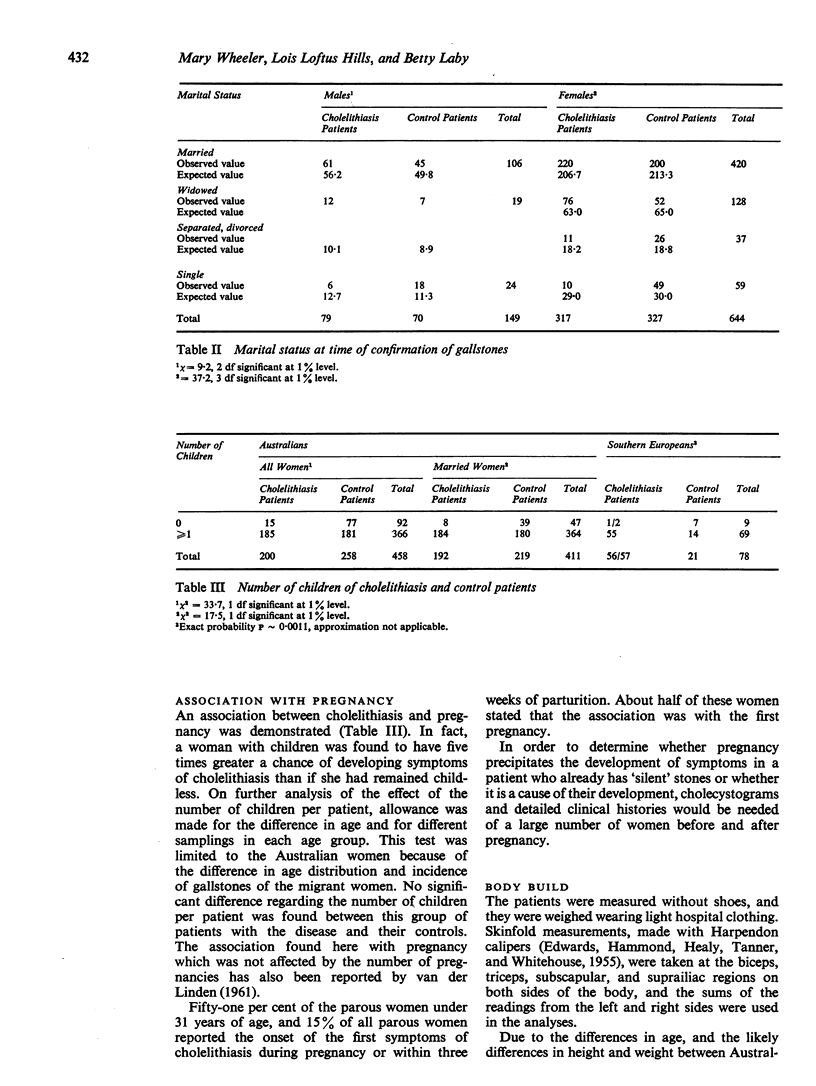
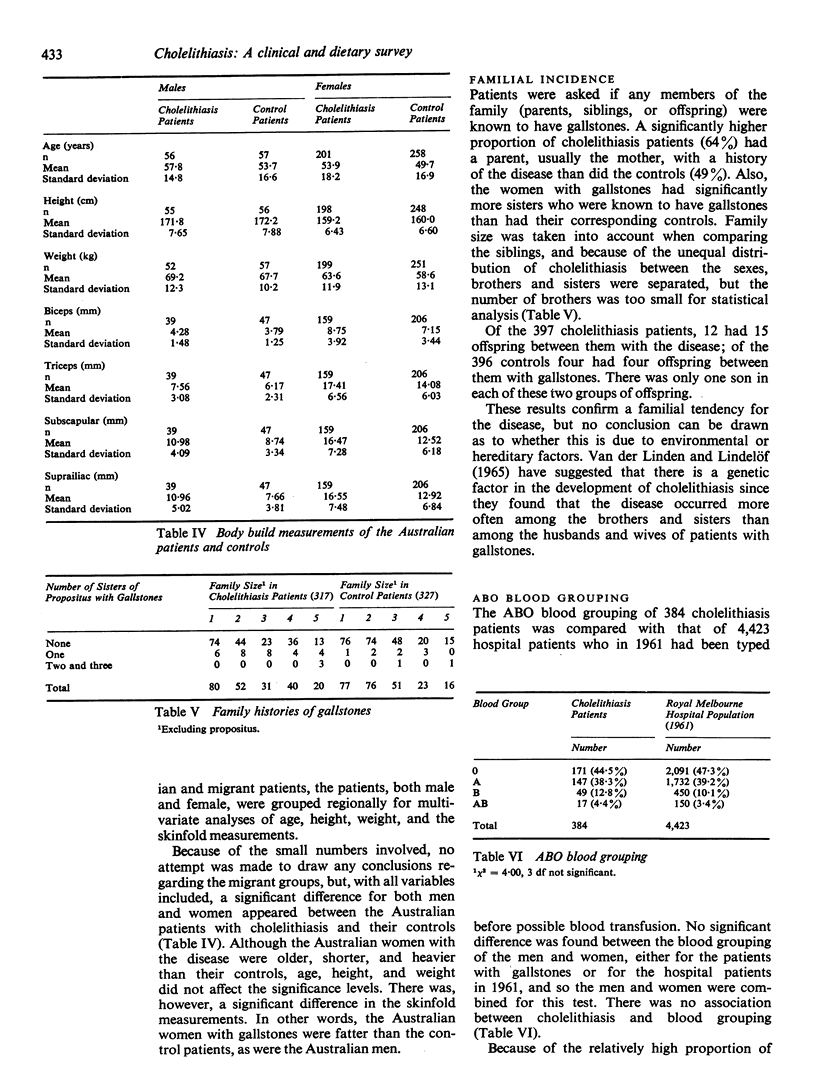
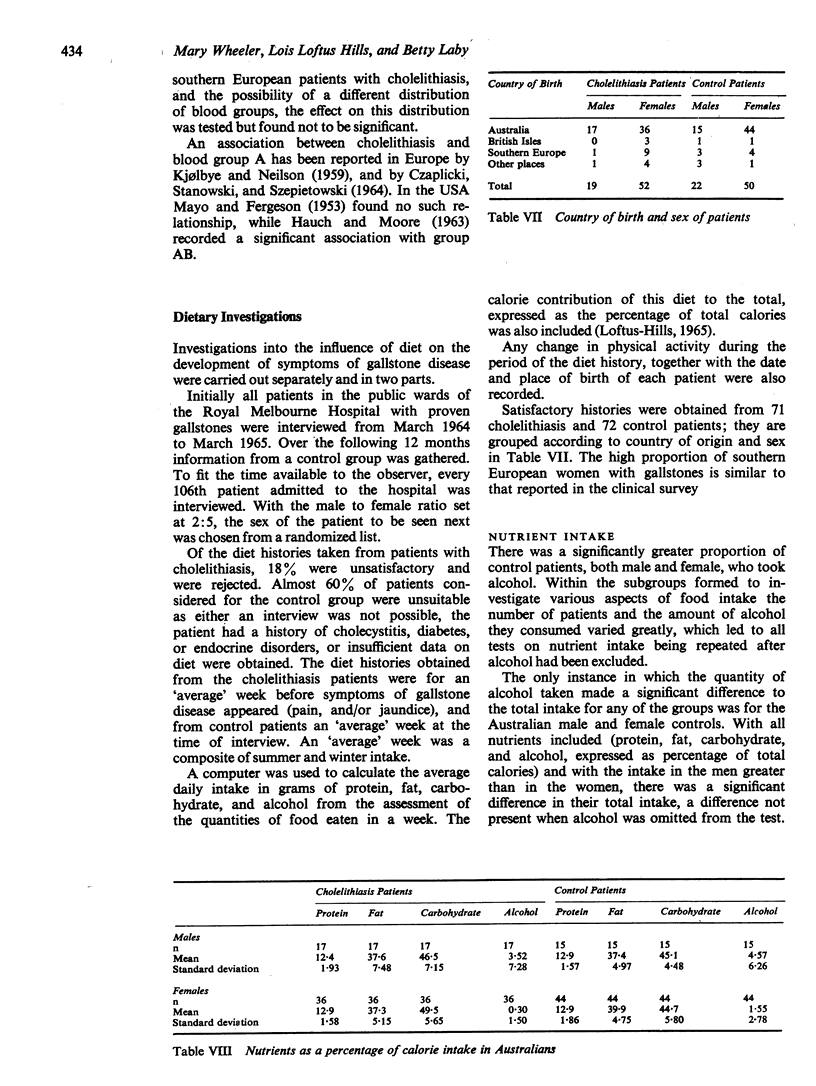
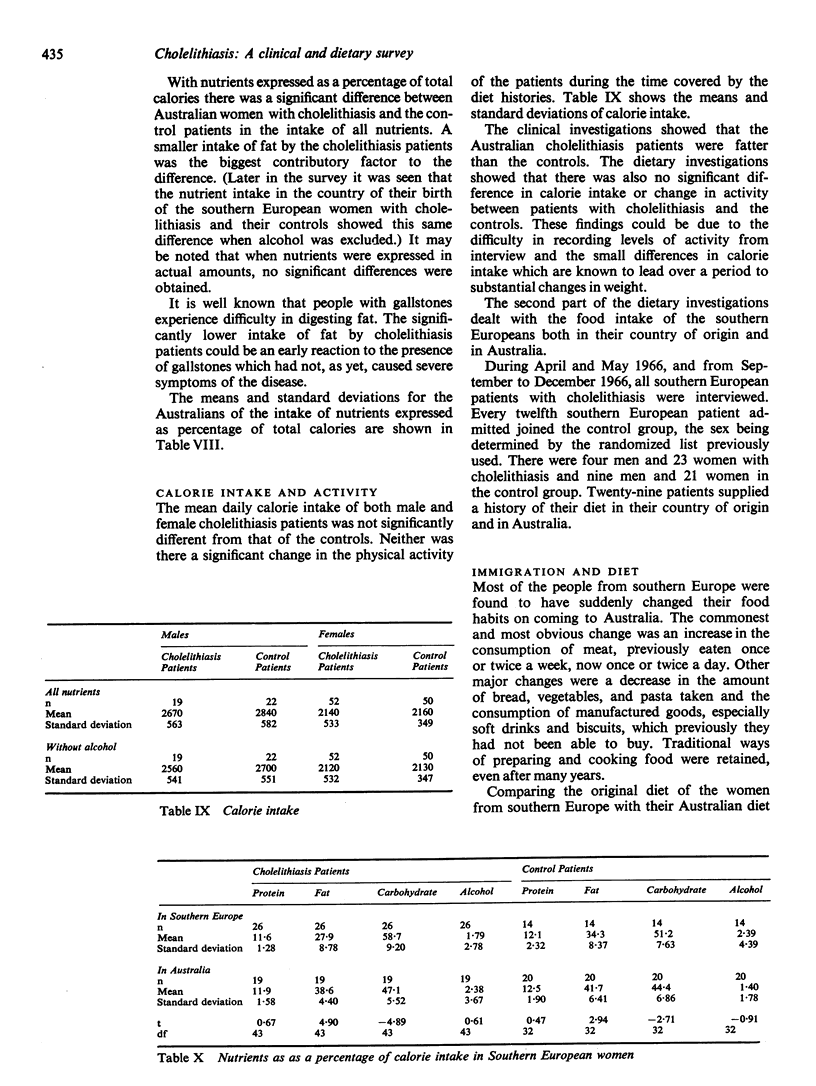
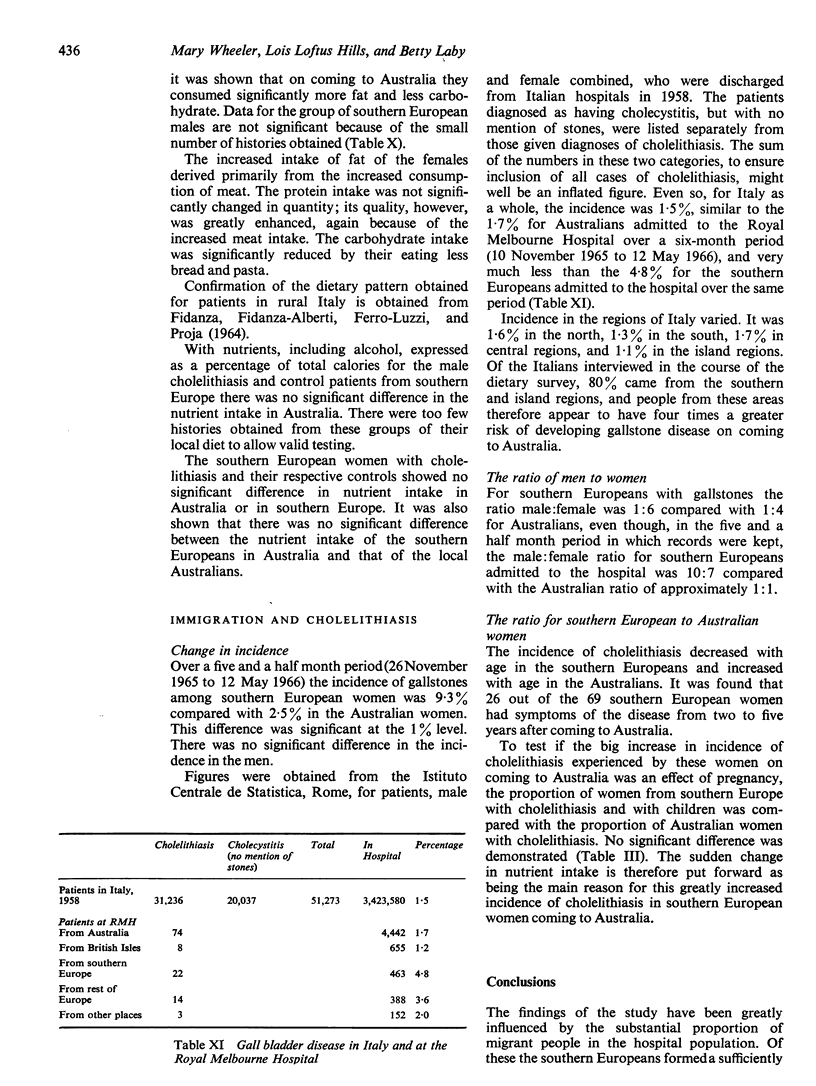
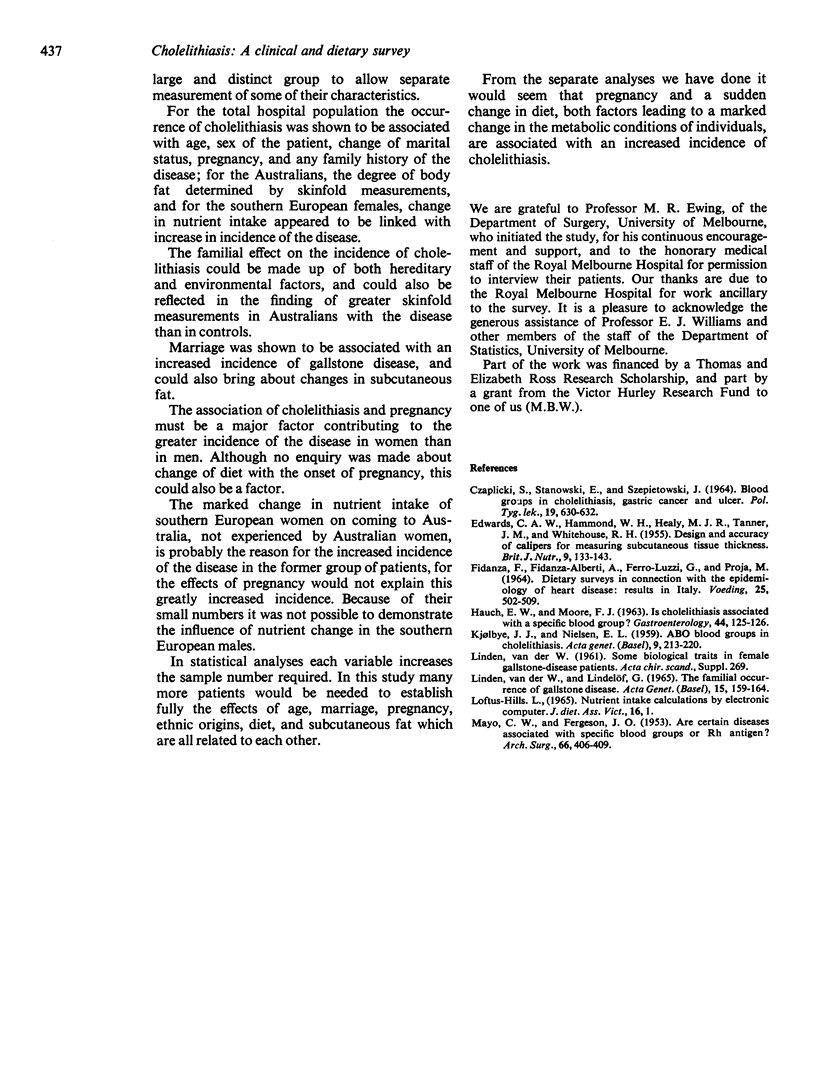
Selected References
These references are in PubMed. This may not be the complete list of references from this article.
- CZAPLICKI S., STANOWSKI E., SZEPIETOWSKI J. GRUPY KRWI A KAMICA Z'OLCIOWA, RAK ZOL ADKA I CHOROBA WRZODOWA. Pol Tyg Lek. 1964 Apr 20;19:630–632. [PubMed] [Google Scholar]
- EDWARDS D. A., HAMMOND W. H., HEALY M. J., TANNER J. M., WHITEHOUSE R. H. Design and accuracy of calipers for measuring subcutaneous tissue thickness. Br J Nutr. 1955;9(2):133–143. doi: 10.1079/bjn19550021. [DOI] [PubMed] [Google Scholar]
- FIDANZA F., FIDANZA-ALBERTI A., FERRO-LUZZI G., PROJA M. DIETARY SURVEYS IN CONNECTION WITH THE EPIDEMIOLOGY OF HEART DISEASE: RESULTS IN ITALY. Voeding. 1964 Oct 15;25:502–509. [PubMed] [Google Scholar]
- HAUCH E. W., MOORE F. J. Is cholelithiasis associated with a specific blood group? Gastroenterology. 1963 Feb;44:125–126. [PubMed] [Google Scholar]
- KJOLBYE J. E., NIELSEN E. L. ABO blood groups in cholelithiasis. Acta Genet Stat Med. 1959;9:213–220. [PubMed] [Google Scholar]
- MAYO C. W., FERGESON J. O. Are certain diseases associated with specific blood groups or Rh antigens? AMA Arch Surg. 1953 Apr;66(4):406–409. doi: 10.1001/archsurg.1953.01260030421005. [DOI] [PubMed] [Google Scholar]
- VANDERLINDEN W., LINDELOEF G. THE FAMILIAL OCCURRENCE OF GALLSTONE DISEASE. Acta Genet Stat Med. 1965;15:159–164. [PubMed] [Google Scholar]


